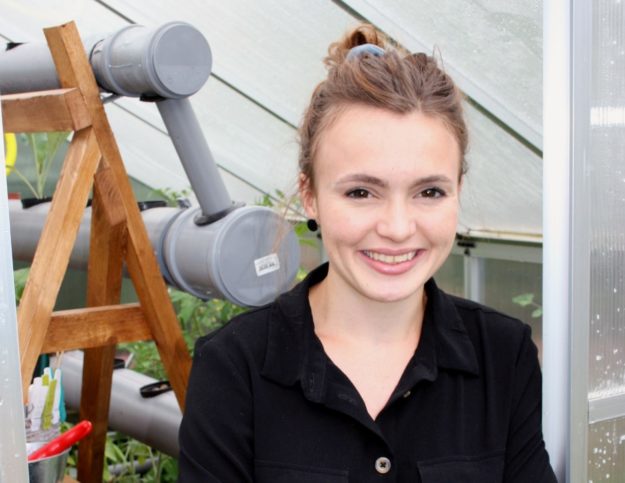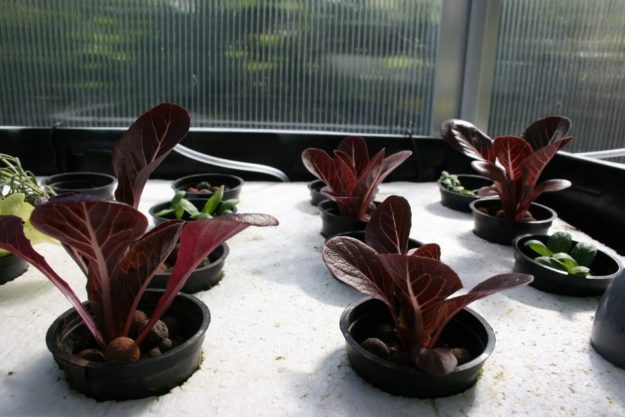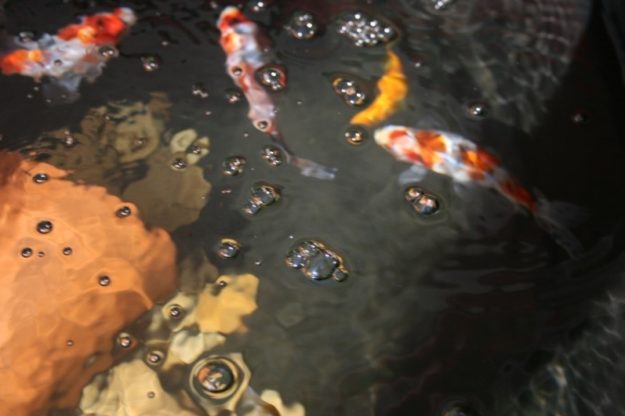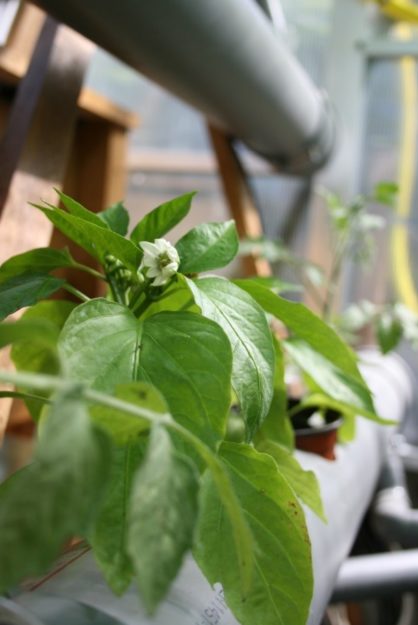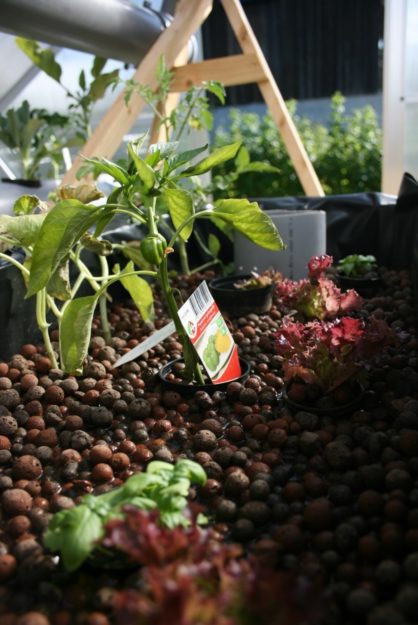Interview
Mandy Juillerat is a Master’s student in life sciences and an academic associate at the School of Engineering and Architecture of Fribourg (HEIA-FR). Her innovative aquaponics project is being developed with support from the Student Incubator Programme at the Smart Living Lab.
How did your project begin?
In April 2019 I was working on a hydroponics project under Professor M. Dabros of the ChemTech Institute. It was exactly the kind of practical research project with real-world applications that I wanted to become a part of when I enrolled in engineering school (after a bilingual baccalaureate with a specialization in Latin).
"As my prototype was taking shape, I heard about the Student Incubator Programme. I sent in my application, and it paid off"
One day, while discussing Prof. Dabros’s project, one of my colleagues mentioned aquaponics (read Mandy Juillerat’s next answer to learn more about aquaponics). I was immediately fascinated by the subject and spent the rest of the day doing research on it. That same evening, I called my parents to ask, “Would you be interested in growing vegetables in our garden using fish tanks?” Armed with diagrams and youtube videos, I convinced them to give up a few square meters of garden space for the project. Then, some time later, as my prototype was taking shape, I heard about the Smart Living Lab’s Student Incubator Programme. Why not try my luck? I sent in my application, and it paid off.
What was it about aquaponics that won you over?
Aquaponics is a truly sustainable system of food production. I believe it offers concrete solutions to some of the most urgent environmental challenges confronting our society today.
Aquaponics is a cultivation technique combining hydroculture and fish farming. In aquaponics, as in hydroponics, plants are not grown in the ground, but on a substrate irrigated with a mixture of water and nutrients. While in hydroponics the nutrients come from chemical fertilizers, in aquaponics it is the fish farming system that will enrich the water with nutrients. In fact, fish faeces will be transformed by a set of bacteria until it can be assimilated by plants. At the same time, the plants clean the water from the fish, which allows for more intensive farming.
In simpler terms, aquaponics brings together fish farming and soilless plant cultivation: fish tanks provide nutrient-rich water to grow fruits, vegetables, and aromatic herbs. The environmental dividends of such a system are enormous. Compared to traditional agriculture, aquaponics eliminates the need for irrigation water and chemical fertilizers. It frees up cultivated land, and is easy to implement in an urban environment.
All things considered, aquaponics is a more balanced form of agricultural production, perfectly suited to meet the demands of demographic growth, urbanization, and climate change. It maximizes the use of space and preserves natural resources. It increases our capacity to produce high-quality food, and allows us to do so locally. The current health crisis has brought the issue of local food production to the front of the agenda. Many Swiss people feel that the country urgently needs to take steps towards food self-sufficiency. For that to happen, sustainable production techniques such as aquaponics have to be developed.
"I believe aquaponics offers concrete solutions to some of the most urgent environmental challenges confronting our society today"
Once I learned about aquaponics’ many advantages, I asked myself why it was not being used more widely. Since I had the necessary engineering skills and knowledge, I set myself the goal of analyzing each of the mechanisms involved in aquaponics in order to get a deeper understanding of the entire system. My main aim was, and still is, to prove that aquaponics can be implemented on a large scale here in Switzerland, in our very gardens.
The first stage of the project was to create my own aquaponics system. I set up a 400L rearing tank for fifteen red fish in a corner of my parents’ garden, and then installed two aquaponic cultivation systems. Using engineering methods, I began to determine the factors that influence the growth of plants and fish.
It is amazing to see what nature is capable of, to witness natural equilibrium at work! I love going to the greenhouse every day to see the new sprouts coming up. But soon I realized that aquaponics systems are difficult to master. Making them work efficiently poses several technical challenges.
What challenges are you trying to overcome?
It has been challenging, but also exciting, to develop a project in a research field that is still emerging. I have to review my work constantly in light of new findings, and every step forward seems to unlock a new set of challenges. I learn something new every day.
The prototype in my parents’ garden has been operational for a few months now. Last autumn I was able to harvest some vegetables—tomatoes, lettuce, and bell peppers. After a pause for winter, I restarted the system in spring 2020. My plants again grew rapidly, and in June I was able to pluck the first strawberries!
"I love going to the greenhouse every day to see the new sprouts coming up"
I have reached my first objectives, but this is by no means the end of the project. I am currently installing measuring devices that will make it easier to analyze parameters that influence the system, particularly the properties of water in the rearing tank and air in the interior of the greenhouse. The collected data should make it possible to optimize the system further.
What concrete plans do you have for the project?
My next objective is to build a second, more compact prototype, an “aquaponics cabinet” for indoor use, like a piece of furniture that can be kept even inside an apartment. The idea is to make it possible to grow aromatic herbs indoors, year-round.
This of course requires dealing with new set of technical challenges. A small volume of water is more difficult to manage due to the low inertia of the system. In addition, creating an aquaponics system that is not only efficient but also aesthetically pleasing implies a different design process and a new component layout.
"Ideally, I would like aquaponics to become well established in Switzerland"
Ideally, I would like aquaponics to become well established in Switzerland. I picture aquaponics systems everywhere: in fish farms, on rooftops, and inside apartments. I am convinced that, in combination with other agricultural techniques, aquaponics represents one of the best ways to increase local food production, and to do so in a sustainable way. There is obviously still a lot to be done, but we are taking the first steps... and planting the first seeds.
Interview: Sofia Marazzi, HEIA-FR
Contact

Jean-Philippe Bacher
-smart houses or cities
-technology transfer
Information
"The Student Incubator is a programme set up by the Smart Living Lab to help students get their project off the ground. This program offered me not only financial support, but also managerial support. On top of that, participation in the program gave credibility to my project and contributed to its valorization. Feeling supported has been a real motivation booster for me!" Mandy Juillerat
